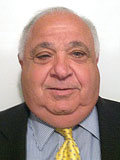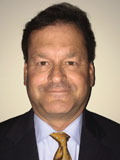Former Field Examiner,
JPMorgan Chase
Managing Partner,
Rosenberg and Fecci Consulting LLC
Let’s face it: field examinations are not the most glamorous part of the commercial finance industry. When a deal is completed, the field examiner is not at the closing dinner, not getting the commission or the tombstone. The field examiner checks the nuts and bolts of the borrower to help determine if the deal is sound and once completed moves on to another engagement. So when a highly regarded field examiner retires after a 40-year career in the industry, it’s not really flashy news and there are no big announcements.
I’ve been a part of the field exam industry since 1990 and have met and worked with many field examiners and field exam managers. One of those field exam managers who I really admired was Justino “Joe” Amorin who retired in December 2011. Before his retirement, Joe was the Northeast region field examination manager for JPMorgan Chase.
When Joe announced his retirement in the summer of 2011, he was steadily being taken out for farewell lunches and dinners. Vendors were angling for his employment, fellow examiners were thanking him for all of his help over the years, industry friends were congratulating him and there were so many JPMC lenders saying, “What are we going to do without you?”
Since Joe made such an impact on so many in the commercial finance industry, I’ve asked him to impart some of his field examination knowledge on the industry with the following questions:
SR: What do you think is the main purpose of a field examination?
JA: In my opinion the primary purpose of the field examination is to provide timely, on-site analysis of the collateral assigned to the lending institution. The field exam illustrates the quality and performance of the borrower’s collateral and potential liabilities that could off-set its collection. The field exam also allows the lender to have a first-hand observation of the borrower’s operations and interaction with its management.
The field examination team is the only area of the lender’s credit department to spend any appreciable time on the premises of a borrower and have access to the original books and records. Red flags are more likely to be recognized while on the premises of the borrower. The examiner can observe the timeliness of the client’s information flow. The examiner also can determine how up-to-date (or not) the borrowers records are kept, and if they are accurately reporting the required information to the lender on a timely basis.
SR: How have field examinations changed from when you started until now?
JA: Obviously, over the years, field exams have changed for the better. When I started doing field exams, most of the businesses that were financed by the ABL lenders were owned and run by one or two people. The concentration was on accounts receivables only, and the exams took a shorter period of time to complete. The concept of the analysis has remained basically the same; however, over the years the depth of the analysis has increased significantly. The companies that now engage in secured lending have no boundaries as far as size is concerned. Also, inventory lending has become a significant asset in the lenders’ portfolio. Now examiners spend as much time analyzing the validity of the inventory as they do with the accounts receivable. With regards to very large inventory deals, the use of inventory appraisal firms are included as part of the field exam process.
In addition, field exams are much more thorough in their analysis of the collateral, as they have access to more information. Technology, such as laptops, data mining software, Excel and pivot tables, have provided the field examiners with tools that allow them to review more information accurately and in a shorter period of time. This is generally a concern to the lender as they want an in-depth informational report sooner than later, and it is very important to the client, since the client is ultimately bearing the cost of the field exam. Now there is more pressure on the field examiner to complete the exam as soon as possible, without reducing the depth of the analyses. In the early days, lenders did not charge the clients to do field exams, as the exam was a “benefit” to the lender and provided an extra level of comfort.
Current field examination reports have become much larger in size due to the volume of information available and the scope required by lenders. Back when I started, some field exam reports were as little as a page or two. Today, field exams generally average 20 pages and can go as high as a couple hundred pages for a complex exam with multiple locations. Now, field exam reports are read by a much wider audience and are generally included as part of the credit portfolio packages. Due to the size of certain loans, many lending institutions will syndicate/participate their loans with other lenders. As a result, field examination reports are usually shared with other participating and prospective participating lenders. Also, fees for exams can vary from a few thousand dollars to hundreds of thousands.
SR: What is the largest asset size field exam with which you have been involved?
JA: My years at Chase afforded me exposure to some very large deals both in lending dollars and collateral assigned. We were involved in secured lending arrangements as little as one million and as large as a billion dollars. I was routinely involved in participations that were in the $500 million-to-$600 million dollar range. Some examinations required the involvement of five to 10 or even more examiners. A large exam back in the ’70s may have required two or three examiners at most. Also, many larger exams may require visits to multiple locations. On some exams, we would visit up to 10 locations domestically and to a lesser extent, internationally as well. Many of the larger exams can take 30-to-40 man days and some even more.
SR: What do you think are the characteristics of highly regarded field examiner?
JA: Good field examiners are dedicated and understand their job. In my opinion, our job is to make sure that all of the necessary information is reviewed and analyzed during the course of the field examination. I have always felt that the main purpose of a field examiner’s job was to make sure the collateral and related information is being reported accurately. Against common notion, we are not on a “witch hunt” and do not go into a field exam thinking there is something wrong.
Field examiners should always be professional. Highly regarded examiners are knowledgeable, personable and diligent. They make sure that all parts of the exam have been covered and communicate well with their lending partners. Good examiners should know all the right questions to ask during an exam, have the ability to connect the dots, and understand and react to the answers that they receive.
Today’s field examiners are more educated. There are more MBAs and CPAs performing field examinations, as well as college graduates directly entering the field. I enjoyed working with young inexperienced examiners and tried to mold them into true professionals. Chase has a very good college intern program and I assisted with student recruitment. I had met many bright interns and the college graduates that we hired through the program. The interns appeared to enjoy the secured lending environment and many moved into credit and lending or stayed in field exam.
Examiners are also required to have strong writing skills. Due to the increase in the number of professionals reading the reports, the product has become more sophisticated and well-written. Experienced field examiners have the ability to look beyond the numbers and get a gut feeling of how the company actually operates. They can determine the strength or weakness of the collateral assigned. For a lender, there is no substitute for an experienced field examiner.
SR: Lastly, where do you think the field examination industry is headed?
JA: I believe the field examiner function will continue to evolve and maintain its importance to the secured lending arena. I hope we never stop spending time on the client’s premises, as that would defeat our primary purpose of having a bank representative review the operations first hand. I can foresee more outside consulting and major accounting firms playing a large part in the field exam industry. In my opinion, banks will continue to expand collateral lending and require more extensive field exams. I also believe the lenders will look to the field examiner to assist in analyzing the financial information. I hope that colleges will offer asset-based lending courses some day and college graduates will look to field exam as a career or as a stepping stone to a career in the lending industry.
Field Exam Evolution
In 1971, when Joe started performing field exams, they would typically only consist of completing a shipping test, a deposit test and a collateral reconciliation, and last just a few days. The examiners were generally employees working for the lender. When Joe retired in 2011, a field exam could last more than a month in man days and include collateral in the billions of dollars. Many current examiners are CPAs, MBAs and college graduates who are entering the field as a career. There are now many local, regional and national firms dedicated to providing field examination services.
Joe has passed on his vast knowledge to many examiners and lenders. Hopefully, that knowledge will continue to be passed onto the field examiners of the future.
Joe is truly a professional field examiner.
Joe Amorin is a former Northeast region field exam manager for JPMorgan Chase (Chase Business Credit).
Steven M. Rosenberg, CPA, is managing partner of Rosenberg and Fecci Consulting LLC.


